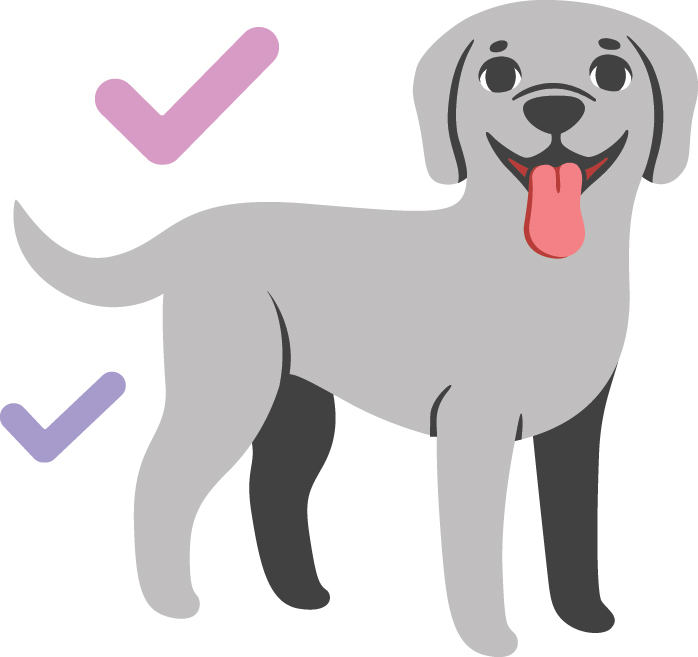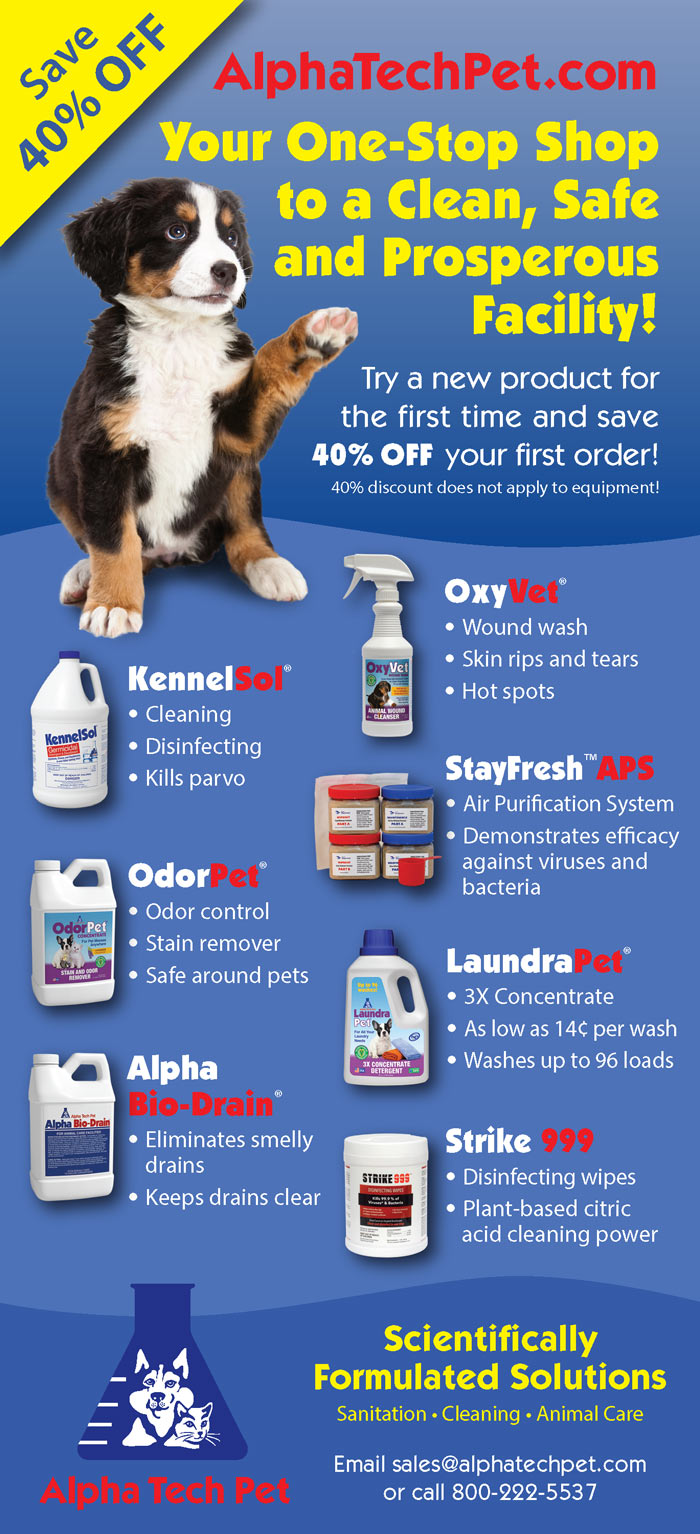
 very client thinks that they have the friendliest, most well-behaved, perfect baby in the world…and they do! However, some dogs just do not enjoy being in a group play situation. As an industry, we are seeing less and less “social” pets and more selective and human-play-centric dogs. So, instead of turning these less-social pets away, use this as an opportunity to educate the pet parent and offer an alternative that would be a better fit for their dog’s health and happiness—while also retaining the client!
very client thinks that they have the friendliest, most well-behaved, perfect baby in the world…and they do! However, some dogs just do not enjoy being in a group play situation. As an industry, we are seeing less and less “social” pets and more selective and human-play-centric dogs. So, instead of turning these less-social pets away, use this as an opportunity to educate the pet parent and offer an alternative that would be a better fit for their dog’s health and happiness—while also retaining the client!
There are three steps to take when delivering potentially tough news to a client: First, document your findings; next, initiate action; and finally, complete the process with clear communication of facts and options.

For initial play evaluations, start with a pet personality form. The goal is for the facility team member to use the form as a conversational guide that is filled in by that employee, not by the client like paperwork that is filled out at a doctor’s office. This strengthens the bond and your brand, and helps to ensure that you will get all of the information needed to help make the best decisions for the pets in your care. Also note, evaluations should be called “play evaluations”—not temperament tests.
These questions on the pet personality form can really raise some red flags for group play, and they will also give you the facts you need to later have a conversation with the client. What would be flags for you on this? Maybe a pet that doesn’t know any commands; a mouthy pet; a dog they can’t keep under control; or the use of prong or stim collar for training, perhaps. Over time, these aversive tools suppress canine body language, and in order to keep everyone safe, we need our play group attendees to be able to confidently express themselves.

The handler needs to review the pet personality form, then observe the pet in a yard by themselves where they can watch and document behaviors. For example, “Peanut is curious, but shows lip-licking and small freezes when the play tech asks for recall.”
The dog may be clearly showing that he is not sure how to hold himself confidently around new people. Could this dog warm up? Absolutely! Don’t risk it by putting him in a scenario where he has to communicate with both people and other dogs when he is at this stage. Once two flags are hit, move to engaging with the pet for individual play and work on getting him comfortable. Don’t rush to take the next step and introduce him to new dogs.

If the dog was comfortable and was showing appropriate loose body language, you would continue through the evaluation process.

Step 3: Communicate and Offer Options
You can have multiple programs, like enrichment-based play, training-based play, individual play and group play, or you can rebrand your daycare as fluid, daily activities that are all about enriching the pets’ lives with experiences built specifically for each pet as an individual. Both are great options that allow for flexibility. Having options like starting with individual play and then slowly introducing them to other dogs, or offering day training to help reinforce behaviors positively, strengthens the bond and trust with the pet parent. You then can present those options in a way that makes the pet parent feel like they are the ones making the best decision for their pet, and not that you are forcing the pet into a specific model.
The conversation is pretty simple and should include an introduction, a compliment about the dog, a summary of what the dog enjoys the most and the available options from which the pet parent can choose. Here is an example:
“Hi Mrs. Smith, this is Jennifer with ABC Pet Resort. We just finished with Peanut’s play evaluation. Do you have a few minutes to chat about what brings Peanut joy? Peanut is super sweet and really enjoys belly rubs and sunbathing. He seems to dislike loud noises and fast movements. What really brings him out of his shell is playing tug one-on-one with his new humans. He is going to fit right in with our Stay-N-Play dogs! He will get lots of individual playtime and attention. We also have a day-training option that will help you with the loose-leash walking and teach him a few new tricks. He will benefit from and enjoy both of the options, and as time goes on and he becomes more confident, he may let us know when it is time to play with dog friends! Would you like to have him start his afternoon off in the Stay-N-Play program or a training class?”
The conversation is pretty simple and should include an introduction, a compliment about the dog, a summary of what the dog enjoys the most and the available options from which the pet parent can choose.
Having options definitely helps, but this system will also work if the pet just is not going to be a fit for your program. It is impossible to be everything for everyone. Or, maybe you only offer group play? This is where networking becomes important. Being stewards in your communities, helping even those that don’t fit your options, pays back tenfold in goodwill. These pet parents are looking for help, so having a list of other trusted facilities, behaviorists and trainers that may potentially be a better fit is extremely helpful. If you serve a niche of small dogs, have a referral location for large dogs. If you don’t offer individual play, maybe you know of a trusted pet sitter you can refer them to. Offering options would make that conversation end positively for a client, and could increase the chances of them using you in the future if their pet’s behavior improves or for a different pet.
That conversation may go like this:
“Mrs. Smith, Peanut is the sweetest girl, but she really craves one-on-one attention and has muted body language. We are advocates for our guests, and we just don’t offer what Peanut enjoys the most. I know that you are looking to find an outlet for her energy, and we partner with Sally’s Play Camp, which has a program that Peanut would enjoy more than our group play options. Sally’s is just two miles away. Would you like her number?”
Steer away from terms like “failed” or “isn’t a fit;” these portray a negative connotation concerning the pet—and remember, Peanut is the best, most friendly dog in the whole wide world. Educating and steering clients to what the pet will benefit from is always a win—for you, the pet parent and, most importantly, the pet!
Jennifer has served since 2016 as General Manager for ABC Pet Resort & Spa, a multi-service pet care center located in North Houston. She also is a consultant and instructor for Pet Care Management Boot Camp, in partnership with Turnkey, Inc., an architectural design/build/operations firm specializing in pet care and veterinary facilities. Jennifer helps both existing and start-up facilities streamline their operations, improve their team management, and understand revenue-generating strategies. Jennifer earned her BS in Agricultural Science at Colorado State University, is a Certified Professional Animal Care Operator (CPACO), a PetTech CPR and First Aid Instructor, and is a Certified Professional Dog Trainer (CPDT-KA).




